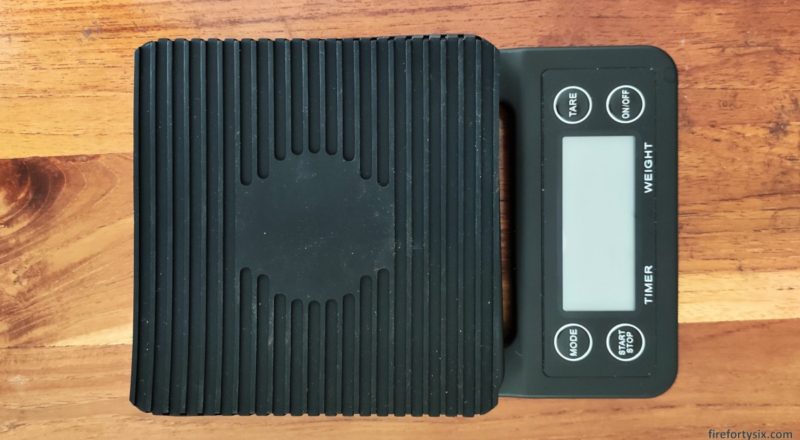I suppose it was inevitable.
Ever since I started making pour over coffee a couple of years back, I’ve slowly but surely added more and more equipment. It all started with the Hario 02 V60 plastic dripper and jug, the first step on a long and slippery slope.


The Hario kit came with a free set of paper filters, which I used for some time before getting a KONE re-usable stainless steel one. The metal filter allowed coffee oils to pass through and resulted in a more flavourful cup, but it also let in the finer particles and gave the coffee a slightly muddy texture.
Even when using the same beans and keeping everything else the same, using a paper filter gives a cleaner taste and accentuates the sour notes, whereas the metal filter provides a fuller mouth feel and highlights the bitter notes.

I had been using pre-ground coffee up till then but switched to whole beans, which of course required a grinder. I started with a manual Hario hand grinder but it took forever to grind and given the high Singapore humidity, the beans got spongy really quickly, making the whole process slow and labourious.
I quickly threw in the towel and bought an entry-level electric burr grinder from DeLonghi. The taste improvement when I moved from pre-ground powder to freshly-ground whole beans was significant, and was the number one reason for the increase in quality of our daily cup.

This lasted for quite some time, and we were happily trying beans from different local and overseas roasters until we settled on the single-origin beans from Mt Whitney Coffee Roasters, which we buy online. They carry a wide range from different regions, but we’ve been partial to those from South America.


We have an electric kettle for everyday use that I pour hot water from directly, but it has a short and wide spout making it difficult to control the amount and rate of the pour. I didn’t want to buy a dedicated kettle just for making coffee, so I settled on a small gooseneck jug that I would pour the hot water into first, before I use it for finer flow control. This small change resulted in a further improvement in taste.

Which brings me to today.
The timer scale that I bought online just arrived. It was something that I didn’t think I would ever need, but after joining a Facebook group focusing on pour over coffee, I was reading how other people were making their coffee and inception slowly set in.
One commonality was how they would use a timer scale to precisely measure the coffee-to-water ratio and ensure consistency in their pour. Which all made sense, given that pour over coffee is basically an extraction and filtration chemical process.






There are many variables that can be adjusted when making pour over coffee, including (but not limited to) the ones below:
- Coffee beans: origin, roast
- Water: temperature, composition
- Pour technique
- Filter type: metal, paper
- Coffee-to-water ratio
- Grind size
Keeping the first three constant, I can do a grid search over different settings of the last three variables to determine which best suits our taste. The Wife and I have different preferences, so I’ll track our respective scores (on a scale of 1 to 10) instead of averaging them out.
I just bought a new batch of Hario bleached paper filters and can compare it with our regular KONE metal one. Our daily dose is around 400 ml and I’ll try coffee-to-water ratios of 1 to 15, 16 and 17. The current setting on our DeLonghi burr grinder is at eight clicks (Medium) and I can try the effect of changing it by plus/minus two clicks for coarser and finer grinds.
Which works out to a total of 2 x 3 x 3 = 18 different combinations. I’ll print out two copies of the chart below (one for each of us), stick them on our fridge and start keeping score.

The journey down the rabbit hole is about to start, and it looks like the next few weeks are going to be interesting.
Note: This post contains affiliate links. If you use these links to buy something, I may earn a commission. Thanks.
